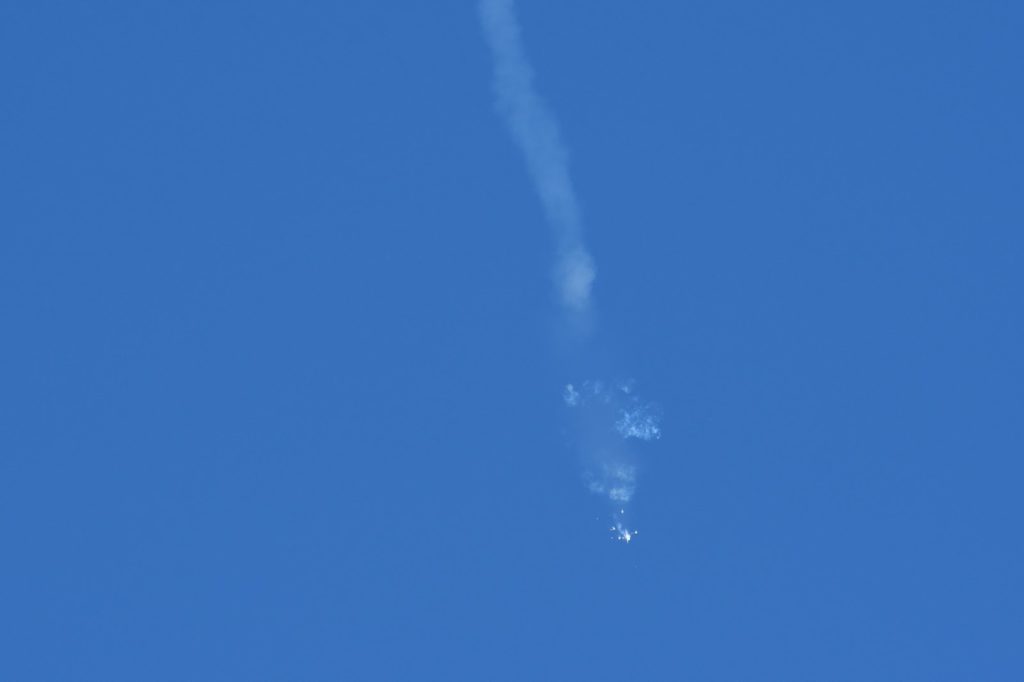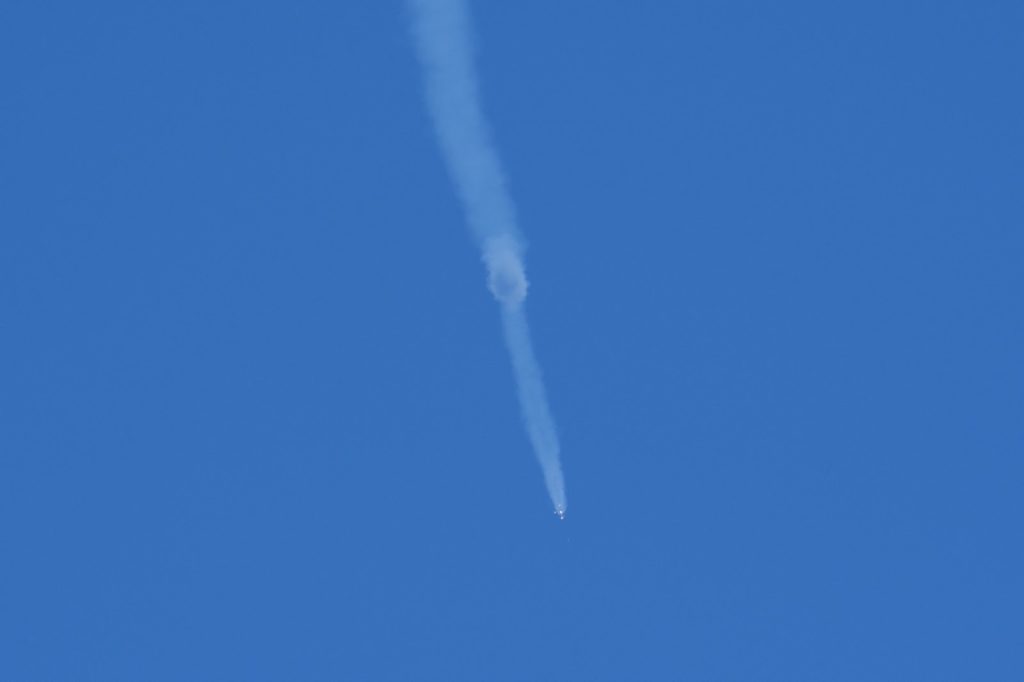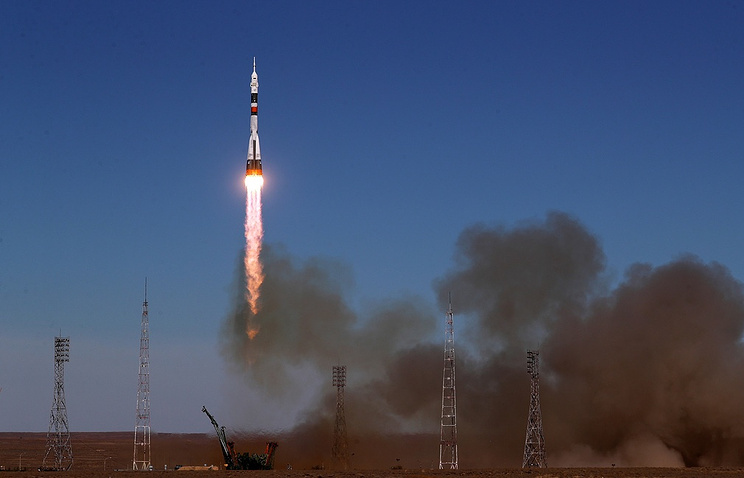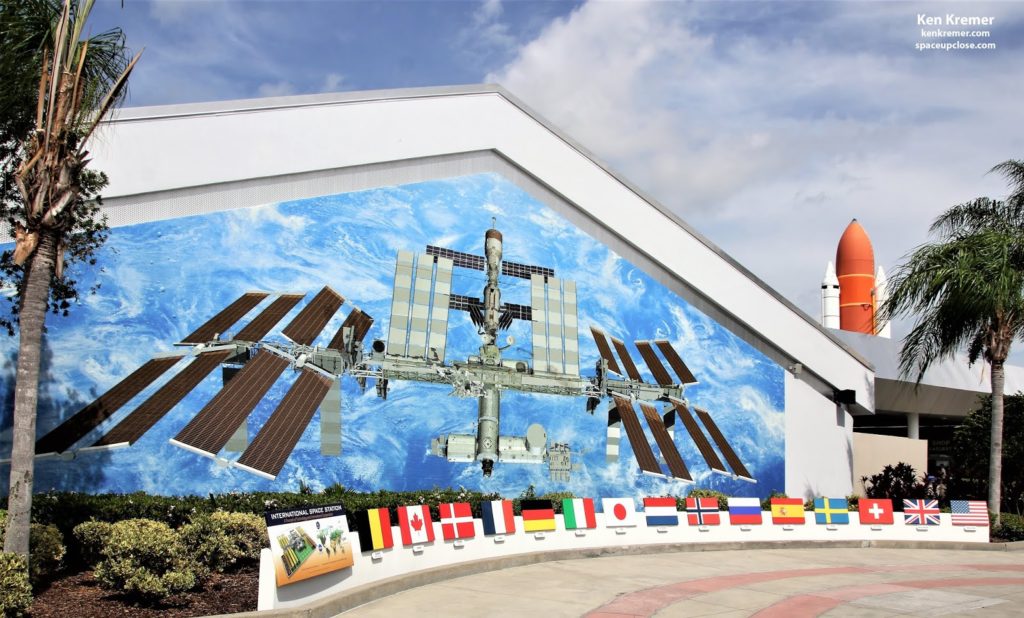 |
|
Renowned cosmonaut
Sergei Krikalev, Roscosmos Executive Director for Manned Flights, speaks to the reporters in Moscow about the Soyuz failure. Credit: Roscosmos |
FL – The emergency abort of the Soyuz crew launch with two crewmembers strapped inside on Oct. 11 was apparently caused by
a failure in the booster separation mechanism for the first two stages of the
Soyuz FG rocket two minutes after blastoff from the Baikonur Cosmodrome in Kazakhstan–
according to an investigation by Roscosmos, the Russian space agency responsible
and equivalent to NASA.
failure resulted in a collision of one of the first stage strap boosters with
the second stage which then triggered a harrowing emergency separation of the Soyuz
MS-10 crew capsule from the Soyuz FG carrier rocket.
are no final versions but the primary cause is understandable and is related to
the collision of a side element making part of the first stage. A collision
occurred during the separation of the first and second stages,” said Sergei
Krikalev, Russias most famous cosmonaut now retired and currently serving as Roscosmos
Executive Director for Manned Flights, as reported by the Russian news agency TASS.
first stage which are attached to the second stage. Three of the strap ons clearly
separated – as seen in photos taken at the time by NASA photographer Bill Ingalls
and others. The fourth was not visible in Ingalls’s photo released by NASA and
included herein.
Why the
separation failure happened is the focus of the investigation which could have been
caused by a malfunction of the hardware mechanisms, computer commands or other
factors yet to be determined.
abort system of the extremely reliable Soyuz booster then kicked in exactly as
it was designed to in a split second – and saved the lives of Soyuz MS-10 crew launch comprising NASA astronaut
Nick Hague and Russian cosmonaut Alexey Ovchinin who planned to spend 6 months aboard
the International Space Station as members of the Expedition 57 crew.
the robustness of the Soyuz rocket abort preparations and planning.
soft landed safely after a ballistic descent and in good health back on Earth
about 34 minutes after liftoff. They flew to about
50 km altitude followed by a parachute assisted ballistic trajectory touchdown
in remote Kazakhstan some 250 miles (400 km) downrange and east of the Baikonur launch site.
G-forces up to about 6 to 7 G’s as well as a few moments of weightlessness
during the initial descent along the ballistic descent trajectory.
apparently disintegrated shortly after the anomaly occurred about 119 seconds after liftoff and about a
second after first stage separation.
bolted on top of the Soyuz MS-10 capsule had also just been jettisoned as
planned during a normal liftoff and announced during the live launch broadcast
from Roscosmos and NASA.
the standard trajectory occurred and apparently the lower part of the second
stage disintegrated. The rocket stopped its normal flight and after that the
automatic system did its work.”
inside the capsule showed Hague and Ovchinin
shaking back and forth at the moment of the mishap.
booster’s first stage collided with the second stage,” Krikalev said.
been caused by the failure of the system of the normal separation, which should
have been activated. We will analyze the causes in detail.”
The astronaut, cosmonaut crew are now
safely back home following the Soyuz launch abort just two minutes after
liftoff from the Baikonur Cosmodrome in Kazakhstan,
Oct. 11, at 11:40 a.m. Moscow time, 4:40 a.m. EDT (2:40 p.m. in Baikonur) on a mission scheduled to
deliver them to the International Space Station.
The Soyuz capsule made a ballistic emergency landing in a
remote area in Kazakhstan east of the town of
Dzhezkazgan, a staging area for crews for normal landings located 250 miles (400 km) from the Baikonur launch site.
Hague and Ovchinin were on their way to start a fast four orbit
trip to the ISS to start Expedition 57 and join the crew of three aboard: Expedition
57 Commander Alexander Gerst of ESA (European Space Agency), NASA Flight
Engineer Serena Auñón-Chancellor and Roscosmos Flight Engineer Sergey Prokopyev.
Hague and Ovchinin first went back to Moscow mission
control the next day. Hague then departed
and arrived back in Houston a day later.
In
interviews Hague complemented the robustness of the Soyuz system.
“The incident only
helped to solidify my appreciation for how robust that system is,” said
Hague.
“There is a launch
abort system that protects me continuously from about an hour before the launch
until I’m in orbit. And at any moment in there that we could have a failure,
it’s going to protect me. This was just a great example of those failsafe
systems stepping in and doing the job.”
This was the first
failure of the Soyuz rocket in 35 years when a rocket exploded on the launch pad at Baikonur and the crew escaped
via the launch abort rocket on top of the capsule.
Since the 1960s there have been more than 160 unmanned and manned
launches of the Soyuz spacecraft.
Roscosmos immediately established a state commission to
investigate the failure.
Wreckage has been
found in the steppes of Kazakhstan by investigators and is being analyzed for
clues and answers.
“The panel of
inquiry got down to work Oct 11. The results are expected after October 20. The
first components found in Kazakhstan’s steppe will help find out what happened.
The necessary measures will be taken afterwards and flights will be
continued,” Krikalev said.
The Soyuz rocket is
grounded until a cause is determined and corrective actions are implemented.
“All rockets of this
class will be authorized for use again only when the causes of the failure were
clear.”
Since the forced shutdown of NASA’s space shuttles in 2011,
the US has been totally reliant on the Russian Soyuz for astronaut trips to the
ISS.
NASA is developing new commercial crew capsules to ferry
crews to the ISS with SpaceX and Boeing- but they have been repeatedly delayed
by technical and funding issues.
The impact of the launch failure on future Soyuz launches
and cargo ship launches is still at this time.
Thus at the moment there is no way to send
new replacement crews to the ISS and NASA’s commercial crew capsules will not
be ready for launch until mid-2019 or later – as I reported here recently.
Officials hope to resume crewed launches as soon as
possible.
Timing is critical because the Soyuz crew capsule for the trio
currently living on the station is only warrantied to last in orbit about 210
days – and that time expires in early January.
If launches do not resume by January, officials may have to
leaved the ISS uncrewed for some period of time – something which is not at all
desirable considering the stations complex operating systems.
The next Soyuz launch had been scheduled for December 20
with a three person crew comprising Soyuz MS-11
commander Oleg Kononenko, Canadian astronaut David Saint-Jacques and NASA
astronaut Anne McClain.
Roscosmos is considering moving that Soyuz MS-10 launch up
by a few weeks if the corrective actions can be implemented. But still TBD.
As for whether Hague and Ovchinin will be given another shot at a launch at
some point is also still TBD.
However Dimitri Rogozin, the head of Roscosmos, has said he
hope to fly them again soon, perhaps as soon as this coming spring.
continuing onsite coverage of NASA, SpaceX, ULA, Boeing, Lockheed Martin,
Orbital ATK and more space and mission reports direct from the Kennedy Space
Center, Cape Canaveral Air Force Station, Florida and Wallops Flight Facility,
Virginia.
and human spaceflight news: www.kenkremer.com –www.spaceupclose.com –
twitter @ken_kremer – email: ken at kenkremer.com
scientist and journalist based in the KSC area.
Ken’s photos are for sale and he is available for lectures and outreach events
 |
| Credit: Ken Kremer/kenkremer.com/spaceupclose.com |







